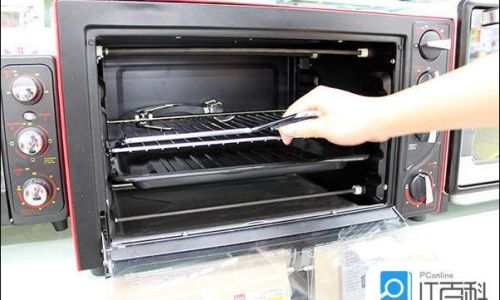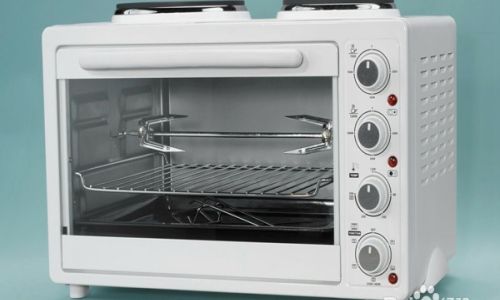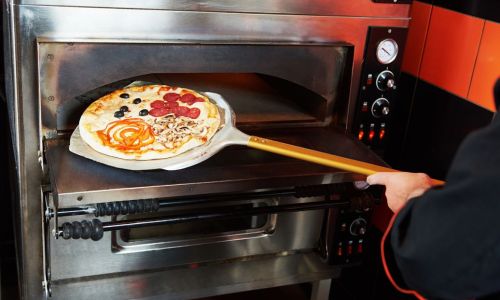Building your own oven from scratch might sound like a daunting task, but with the right tools, materials, and a bit of patience, it can be a rewarding DIY project. Whether you’re looking to create a rustic, outdoor pizza oven or a sleek, modern kitchen addition, the process involves careful planning, precision in construction, and an understanding of basic oven principles. This guide will walk you through the steps to build a functional and durable homemade oven, highlighting key considerations and techniques to ensure success.

Section 1: Planning and Design
Before you start gathering materials or breaking out the tools, it’s crucial to have a clear plan. Consider the following aspects:
- Purpose and Location: Will your oven be for baking bread, roasting meats, or making pizza? Will it be an outdoor feature or a permanent fixture in your kitchen?
- Size and Capacity: Determine the dimensions based on your needs and available space. A larger oven can accommodate more food but will require more materials and space.
- Materials: Traditional oven materials include refractory cement, firebricks, insulation, and metal for the outer shell. Modern DIYers might also use ceramic fiber blankets or vermiculite for insulation.
- Fuel Type: Decide whether you want a wood-fired, gas, or electric oven. Wood-fired ovens add a rustic charm and require periodic maintenance, while gas or electric options offer convenience.
- Budget: Establish a budget to guide your material choices and overall design.
Section 2: Gathering Materials and Tools
Once you have a clear vision, gather the necessary materials and tools:
-
Materials:

- Refractory cement or mortar
- Firebricks or ceramic tiles
- Insulation (refractory wool, ceramic fiber blanket, or vermiculite)
- Metal sheet for the oven door (stainless steel or galvanized steel)
- Concrete blocks or bricks for the base and outer structure
- Mortar for the outer structure
- Metal mesh or reinforcing wire
- Oven door handle and hinges
- Fireproof cement board (optional, for lining the oven floor)
- High-temperature silicone sealant
-
Tools:
- Trowel and mixing tools for refractory cement
- Measuring tape and markers
- Drill and bits
- Hammer and chisel
- Level and spirit level
- Safety gear (gloves, goggles, mask)
- Welding equipment or screws and a screwdriver (if assembling metal parts)
Section 3: Constructing the Oven Base
A stable base is essential for your oven. Here’s how to build it:
- Layout and Mark: Measure and mark the footprint of your oven on a flat, level surface. Ensure the area is clear of any obstacles.
- Build the Base: Use concrete blocks or bricks to create a sturdy base. Lay the first layer and check for levelness. Continue adding layers, using mortar to bond them together.
- Reinforce: Add metal mesh or reinforcing wire between layers for added strength.
- Allow to Set: Let the mortar dry completely before proceeding to the next step.
Section 4: Building the Oven Chamber
The oven chamber is where the magic happens. Follow these steps to construct it:

- Insulation Layer: Lay a layer of insulation (refractory wool, ceramic fiber blanket, or vermiculite) on top of the base. This layer will protect the outer structure from heat damage.
- Firebrick Layer: Begin laying firebricks or ceramic tiles around the perimeter and up the sides of the insulation layer. Use refractory cement to bond the bricks together, ensuring they are level and evenly spaced.
- Back Wall: Construct the back wall with firebricks, leaving an opening for the flue (if applicable). The flue allows smoke and heat to escape.
- Floor: Line the oven floor with fireproof cement board or additional layers of firebricks. This will protect the bottom from direct heat and provide a stable surface for baking.
- Front Opening: Leave an opening for the oven door, ensuring it is large enough for easy access but small enough to retain heat.
Section 5: Building the Oven Door
The oven door is crucial for maintaining heat and controlling the baking environment. Here’s how to make one:
- Cut Metal Sheet: Measure and cut a piece of metal sheet to fit the front opening. Ensure it overlaps slightly to create a seal.
- Attach Hinges: Install hinges on one side of the door and the corresponding side of the oven frame. Use screws or welding to secure them.
- Add Handle: Attach a heat-resistant handle to the door for easy opening and closing.
- Seal: Use high-temperature silicone sealant around the door frame to prevent heat loss.
Section 6: Constructing the Outer Shell
The outer shell protects the oven structure and adds aesthetic appeal. Here’s how to build it:
- Measure and Cut: Measure the dimensions of the oven chamber and cut bricks or concrete blocks to fit around it.
- Lay the First Course: Start with the bottom layer, using mortar to bond the bricks together. Ensure they are level and evenly spaced.
- Continue Building: Continue laying bricks in courses, using mortar to bond each layer. Check for levelness and alignment as you go.
- Fill Gaps: Use mortar to fill any gaps between bricks for a smooth, finished look.
- Add Features: Consider adding decorative elements like a chimney, ventilation holes, or an oven hood.
Section 7: Finishing Touches and Testing
Before you start baking, there are a few finishing touches and safety checks to consider:

- Seal Cracks: Use refractory cement or silicone sealant to fill any cracks or gaps in the oven chamber and door.
- Ventilation: Ensure proper ventilation, especially if your oven is wood-fired. This will prevent smoke buildup and keep the oven running efficiently.
- Safety Check: Inspect all parts of the oven for stability and structural integrity. Make sure there are no loose bricks or mortar.
- First Fire: Conduct a test fire to ensure the oven functions correctly. Start with a small fire and gradually increase the heat. Monitor the oven for any signs of distress.
- Baking Test: Once the oven is up to temperature, conduct a baking test. Bake something simple like bread or pizza to check for even heat distribution and performance.
Conclusion
Building your own oven is a rewarding DIY project that can add both functionality and charm to your home. By carefully planning, selecting the right materials, and following these steps, you can create a durable, efficient oven tailored to your needs. Remember, safety is paramount throughout the process, so wear appropriate protective gear and always follow manufacturer instructions for materials and tools. With patience and attention to detail, you’ll soon be enjoying homemade bread, pizzas, and roasted meats from your very own custom-built oven. Happy baking!





0 comments